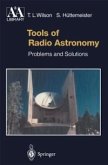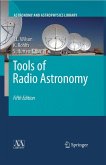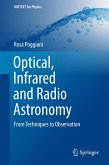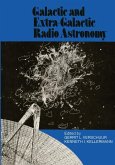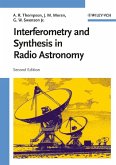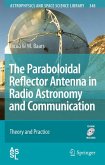This 6th edition of "Tools of Radio Astronomy", the most used introductory text in radio astronomy, has been revised to reflect the current state of this important branch of astronomy. This includes the use of satellites, low radio frequencies, the millimeter/sub-mm universe, the Cosmic Microwave Background and the increased importance of mm/sub-mm dust emission.
Several derivations and presentations of technical aspects of radio astronomy and receivers, such as receiver noise, the Hertz dipole and beam forming have been updated, expanded, re-worked or complemented by alternative derivations. These reflect advances in technology.
The wider bandwidths of the Jansky-VLA and long wave arrays such as LOFAR and mm/sub-mm arrays such as ALMA required an expansion of the discussion of interferometers and aperture synthesis. Developments in data reduction algorithms have been included.
As a result of the large amount of data collected in the past 20 years, the discussion of solar system radio astronomy, dust emission, and radio supernovae has been revisited.
The chapters on spectral line emission have been updated to cover measurements of the neutral hydrogen radiation from the early universe as well as measurements with new facilities. Similarly the discussion of molecules in interstellar space has been expanded to include the molecular and dust emission from protostars and very cold regions.
Several worked examples have been added in the areas of fundamental physics, such as pulsars.
Both students and practicing astronomers will appreciate this new up-to-date edition of Tools of Radio Astronomy.
Several derivations and presentations of technical aspects of radio astronomy and receivers, such as receiver noise, the Hertz dipole and beam forming have been updated, expanded, re-worked or complemented by alternative derivations. These reflect advances in technology.
The wider bandwidths of the Jansky-VLA and long wave arrays such as LOFAR and mm/sub-mm arrays such as ALMA required an expansion of the discussion of interferometers and aperture synthesis. Developments in data reduction algorithms have been included.
As a result of the large amount of data collected in the past 20 years, the discussion of solar system radio astronomy, dust emission, and radio supernovae has been revisited.
The chapters on spectral line emission have been updated to cover measurements of the neutral hydrogen radiation from the early universe as well as measurements with new facilities. Similarly the discussion of molecules in interstellar space has been expanded to include the molecular and dust emission from protostars and very cold regions.
Several worked examples have been added in the areas of fundamental physics, such as pulsars.
Both students and practicing astronomers will appreciate this new up-to-date edition of Tools of Radio Astronomy.
Dieser Download kann aus rechtlichen Gründen nur mit Rechnungsadresse in A, B, BG, CY, CZ, D, DK, EW, E, FIN, F, GR, HR, H, IRL, I, LT, L, LR, M, NL, PL, P, R, S, SLO, SK ausgeliefert werden.



